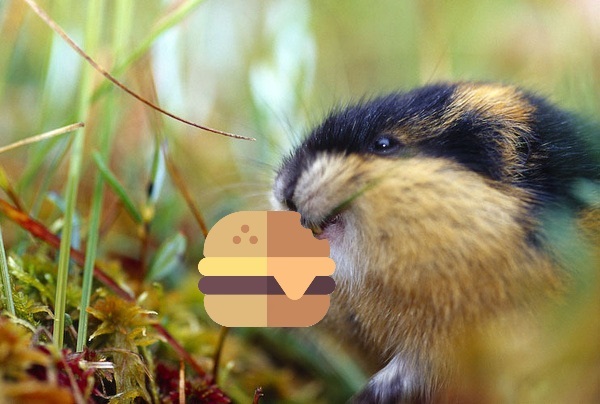Article (from earlier this year):
https://finance.yahoo.com/news/hobbyist-beekeepers-buzzing-reversing-america-212213119.html
Native bees are still fucked. Get a bee house for your house and plant flowers to help. Get rid of your lawn too.
Here’s a pretty solid explanation of the problem and how it remains unsolved today, for anyone interested.
https://youtu.be/m-fA_tjtFOc?t=179 without the trackers
That’s a one hour video! o.o
It’s only half an hour at 2x
Yeah but it’s a compilation of news stories and the part about bees is relatively short.
Damn, was wishing it was longer too…
Summary by Kagi:
Title: Gas Stoves, Murder Hornets, Spy Balloons, And Other Media Panics We Forgot About - SOME MORE NEWS
- The media often engages in sensationalism, quickly moving from one crisis to another, which can leave the public unaware of ongoing issues that require attention.
- The narrative surrounding Colony Collapse Disorder (CCD) highlights how bee populations, particularly honeybees, have been misrepresented; while honeybee farming has increased, wild bee populations are facing significant threats.
- The panic over murder hornets was largely exaggerated, focusing more on their potential threat to humans rather than the real danger they pose to honeybee populations and agriculture.
- The controversy over gas stoves stemmed from concerns about health risks associated with gas emissions, yet it was sensationalized into a culture war issue, with no actual plans to ban them at the federal level.
- The fear of losing meat consumption due to the rise of lab-grown alternatives and insect-based protein is largely unfounded; these innovations are viewed as potential solutions to resource scarcity rather than outright bans on traditional meat.
- Brexit serves as a cautionary tale of how misleading campaigns can lead to significant economic and social consequences, with many voters now regretting their decision to leave the EU.
- The Chinese spy balloon incident exemplifies media panic, where the focus shifted from the actual implications of surveillance to sensationalist narratives that stoked fear without substantial evidence.
- Many perceived crises, such as the ozone layer depletion, have seen improvements due to coordinated international efforts, contrasting with the media’s tendency to focus on immediate panic rather than long-term solutions.
- The document critiques the media’s failure to follow up on stories, which can lead to misinformation and a lack of public awareness about resolved issues or ongoing challenges.
- Overall, the discussion emphasizes the need for critical media consumption and the importance of understanding the nuances behind reported crises to foster informed public discourse.
Deets about the bees:
In the winter of 2006, US beekeepers reported unusually high levels of hive loss, with 28-33% of colonies dying off in commercial operations. This phenomenon was named Colony Collapse Disorder (CCD).
Over the next decade, media coverage progressed from seeing CCD as a scientific curiosity to a full-blown crisis, with warnings about the potential consequences of bees going extinct.
However, despite the dire warnings, the overall honeybee population in the US has actually been increasing. As of 2024, the US has added almost 1 million new bee colonies in the last 5 years, bringing the total to 3.8 million.
The reason for this is that the bees thriving are the domesticated honeybees, which are raised in captivity for honey production and crop pollination. These honeybee populations are doing well.
The real issue is with wild bee species, many of which are in danger of extinction. Factors like habitat loss, pesticide use, and the spread of diseases from commercial honeybee colonies are threatening these wild bee populations.
So while the overall bee population is not collapsing, the diversity and health of wild bee species is still a major environmental concern that was overshadowed by the focus on the thriving honeybee industry.Wow he is insufferable.
I know he’s great isn’t he?!
I found a bumble nest this year and made sure to preserve it cuz they’re great little guys.
Great job! I have a bee house for native solo bees and I see a couple of the little guys in there. It is really cool. I highly recommend it.
How does one get rid of a lawn?
I dug mine out, covered the ground with shredded cedar (an attractive mulch) and planted a diverse set of trees and smaller plants. My city offered a free one hour consultation with a landscaper to select drought tolerant plants I would like and plan an arrangement of them. I replaced all the sprinkler heads with drip irrigation nodes controlled by a Rachio that does smart adjustments like not watering in the rain.
Now we have a beautiful yard with redbud trees and lavender and blue flowering sage plants everywhere. The bees happen to love it. I have a little hibiscus plant which I baby with extra water and it produces stunning flowers one after another.
I’m talking about my front yard there, which has pure ornamental value. The back yard lawn I also dug out but I replaced it with UC Verde Buffalo Grass. This is a rich, soft drought-tolerant grass that looks great short or long and doesn’t require constant watering. You can even stop watering for long periods and it will just go dormant.
I didn’t want to lose the back lawn because I have kids and they play on it.
I did all of the above myself while working full time, except for the tree installations, which did involve a work crew coming out to dig holes.
I have a lot of yard to maintain and it has been a project over the years. Drip irrigation is less “set and forget” than I hoped - every once in a while there’s a line that’s clogged or burst.
But we are in an area that has been embattled with droughts over the years and showering a lawn with sprinklers every morning is just idiotic here. I’d say 70% of my neighborhood have ditched their lawns. Some just let them die and haven’t done shit about it. Others have gone whole hog into stone and succulent makeovers. And the other 30% still overwater their shit until water is flowing out over the sidewalks and down the gutter. These are mostly old people with old ideas - the earth is patiently waiting for them to die off.
Thanks for this comprehensive run down of what you did. Sounds like it is much prettier than a lawn.
I just stopped watering mine. I also live in an area where grass dies quickly without copious irrigation, which should have been the first clue to the previous homeowners to maybe not grow grass.
Lawn is actually really fragile in most climates. Just stop explicitly caring for it, and toss generous amounts of flowers and grasses seeds, and within 1-2 years there’s nothing left.
-
Disband HOA
-
Let it go to seed with native plants.
Clover provides more cover to allow wildlife to flourish where I’m from and stays short enough to be in compliance with lots of city codes/ looser HOAs, if disbanding/buying a house elsewhere isn’t an option. Check if there’s a native species where you are first, though.
-
Check out Crime Pays But Botany Doesn’t (aka Joey Santore, aka Tony Santoro). He’s been a vocal advocate for the “kill your lawn” / natural landscaping crowd for a while, and also I just really enjoy him.
He worked on/is working on a cable TV show called “Kill Your Lawn” too, but it’s not super widely available. You can find some episodes of that on YouTube as well.
Sheet mulching
Stop putting on water and chemicals. grass is not very fragil so if it belongs it will survive. all the wildiflowers that will move in and make the who more diverse. If it dosn’t survive it shoudn’t be there anyway
Love my bumbles. They’re sweet little derps. The native milkweed in my garden came through strong this year and I made sure to spread the seeds nearby so next year is even better for them.
They really are incredible to watch. Just little weirdos.
This is actually not a good thing.
For one, Honeybees disrupt the structure and functionality of plant-pollinator networks, and they are nowhere near the type of pollinator we actually need (i.e. native, wild pollinators that thrive outside artificial colonies created to benefit humans).
There’s no balance if we only increase populations of honeybees. “Raising nonnatives does not “save the bees”—and may harm them.”
The article (the Yahoo one linked in the OP) does cover the detriments of these domestic bee colonies, but right at the end of the article…
The David Suzuki Foundation has a write-up on this topic, if anyone’s interested.
Come to uplifting news! We turn news that seems good and still make you feel horrible!
Can we please just celebrate partial wins? Please?
This isn’t uplifting or a partial win, you cannot combat an ecological disaster with another ecological disaster. Its like releasing a ton of wild cats into the wild, great for the cats not great for anything else.
I’d be happy to see cats everywhere. At least until the barren wasteland they’d cause claims me as well.
I vote for that apawcolypse
But this is not a win. It’s not a partial win either. It’s like saying we saved wildlife because we bred cows.
There is no partial win at all.
Sure, when there’s one we will celebrate it
This is why I did a 180 on getting hives.
Honey is nice, but driving out the bumbles around here would be criminal.
It’s about pollinating not about bees. Basically it’s the only direct thing we can do to increase pollinators.
Sure u can plant…if u own.
Honeybees are unfortunately only a very small part of pollinators. There’s a LOT of other bees, as well as other insects that pollinate. And honeybees even often outcompete native pollinators, which is bad for biodiversity.
About 6000 species of solitary bees in North America. Providing them habitat by planting the flowering species they visit is a huge first step. Additionally making ‘space’ for their larva is enormously helpful. Many are ground dwelling, so getting rid of ‘landscape cloth’ which blocks them from burrowing is useful.
Check with your local cooperative extension service for information about the bees in your area.
Here’s an article from OSU on the topic: https://extension.oregonstate.edu/gardening/pollinators/nesting-habits-solitary-bees
Xerces Society: https://xerces.org/publications/brochures/save-the-stems
World Bee Project: https://worldbeeproject.org/2023/11/15/solitary-bees-their-crucial-pollination-role-and-diverse-habitats/
Here in Brazil we have native stingless bees, they are awesome and very cute, but European honeybees do outcompete them.
Thankfully there are beekeepers that work with the native species, but as they produce way less honey, it’s less lucrative.
Just make suburban mom’s believe it’s special somehow. Manuka honey goes for like $40/lbs at Costco vs regular honey at like $5-10.
And honeybees even often outcompete native pollinators, which is bad for biodiversity.
Of course, Texas has to incentivize this type of destruction:
"In Texas, the law qualifies people who own between five and 20 acres of land for tax breaks if they rear bees for five years. "
Yeah we had shit tons of wasps in central Alberta at least last year. I felt bad for people that are scared of them but I was happy to see at least one pollinator thriving.
And that includes a lot of random flies, including those that people don’t like.
Pretty sure it could also be the result of changes in allowed substances sprayed on crops, fields, and forestry during management or harvesting, as well as industry adoption of those standards.
But why is this article not in buzzfeed?
Are they still around?
Edit: nope
On April 20, 2023, Peretti announced that BuzzFeed would be shuttering BuzzFeed News
The honeybees might have come back a lot faster if the US had not turned to chemical miticides and selected for varroa mite resistance instead.
Instead, the vast majority of commercial beekeepers are producing chemical-dependent bees, which is not good in the long term. But chemical miticide producers are happy to make profits.
Because of the ways that honeybees mate, i.e. the virgin queen mates with several drones randomly on her mating flight, the mass of chemical-dependent genetics waters down any progress made in spreading varroa resistant genetic lines.
Modern beekeeping is a lot more complicated with beekeepers having to keep to a strict timetable of varroa treatment to keep their colonies alive.
That’s a headline with some sting! Bee the change you want to see! I bet the dad-journalists are called in when anything has to do with bees.
It’s good to bee back, baby!













